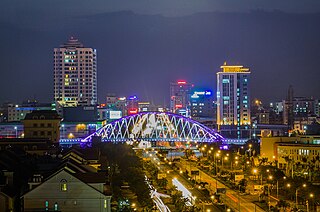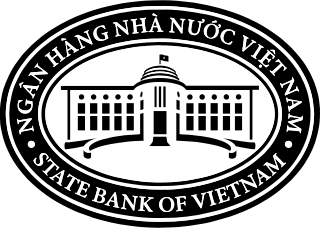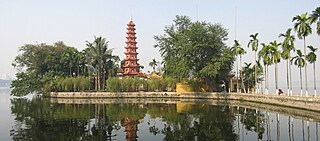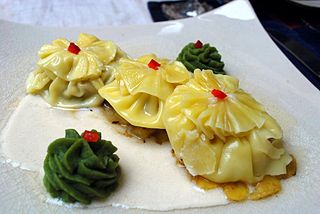
As of June 2024, Vietnam maintains diplomatic relationships with 189 UN member states, State of Palestine and Sahrawi Arab Democratic Republic. In 2011 the Central Committee of the Communist Party of Vietnam, at the 11th National Congress of the Communist Party of Vietnam, released an official statement about Vietnam's foreign policy and a section of the statement stated: "Vietnam is a friend and reliable partner of all countries in the international community, actively taking part in international and regional cooperation processes. Deepen, stabilize and sustain established international relations. Develop relations with countries and territories in the world, as well as international organizations, while showing: respect for each other's independence; sovereignty and territorial integrity; non-interference in each other's international affairs; non-use or threat of force; settlement of disagreements and disputes by means of peaceful negotiations; mutual respect, equality and mutual benefit."

Hanoi is the capital and second-most populous city of Vietnam. As evident by the literal translation of its name – 'inside the river' – portions of Hanoi's border are delineated by the Red and Black Rivers. As a municipality, Hanoi consists of 12 urban districts, 17 rural districts, and one district-level town. It has an area of 3,359.84 km2 (1,297.24 sq mi) and a population of 8,435,700 in 2022. In 2022, Hanoi has the second-highest gross regional domestic product of all Vietnamese provinces and municipalities at 51.4 billion USD, behind Ho Chi Minh City. Hanoi Capital is also ASEAN 8th largest economy after Surabaya.

Hỏa Lò Prison was a prison in Hanoi originally used by the French colonists in Indochina for political prisoners, and later by North Vietnam for U.S. prisoners of war during the Vietnam War. During this later period, it was known to American POWs as the "Hanoi Hilton". Following Operation Homecoming, the prison was used to incarcerate Vietnamese dissidents and other political prisoners, including the poet Nguyễn Chí Thiện. The prison was demolished during the 1990s, although its gatehouse remains a museum.

Vietnam, officially the Socialist Republic of Vietnam (SRV), is a country at the eastern edge of mainland Southeast Asia, with an area of about 331,000 square kilometres (128,000 sq mi) and a population of over 100 million, making it the world's fifteenth-most populous country. One of the two Marxist-Leninist states in Southeast Asia, Vietnam shares land borders with China to the north, and Laos and Cambodia to the west. It shares maritime borders with Thailand through the Gulf of Thailand, and the Philippines, Indonesia, and Malaysia through the South China Sea. Its capital is Hanoi and its largest city is Ho Chi Minh City.

Haiphong is the third-largest city in Vietnam and is the principal port city of the Red River Delta. The municipality has an area of 1,526.52 km2 (589.39 sq mi), consisting of 8 urban districts and 7 rural districts. Two of the rural districts cover islands in the South China Sea: Bạch Long Vĩ and Cát Hải. It has a population of 2,359,000 in 2021. The city's economy has strength in manufacturing, as evident by large industrial parks and numerous smaller traditional handicraft villages. Historically, Haiphong is the first place in Vietnam and Mainland Southeast Asia to get electricity.

Phở or Pho is a Vietnamese soup dish consisting of broth, rice noodles, herbs, and meat, sometimes chicken. Phở is a popular food in Vietnam where it is served in households, street-stalls, and restaurants country-wide. Residents of the city of Nam Định were the first to create Vietnamese traditional phở. It is considered Vietnam's national dish, and is said to be influenced by Cantonese and French cultures.

Quy Nhon is a coastal city in Bình Định province in central Vietnam. It is composed of 16 wards and five communes with a total of 284 km2 (110 sq mi). Quy Nhon is the capital of Bình Định province. As of 2019 its population was 457,400. Historically, the commercial activities of the city focused on agriculture and fishing. In recent years, however, there has been a significant shift towards service industries and tourism. There is also a substantial manufacturing sector.

Gỏi cuốn, nem cuốn, salad roll, summer roll, fresh spring roll, or rice paper roll is a Vietnamese dish traditionally consisting of pork, prawn, vegetables, bún, and other ingredients wrapped in bánh tráng. Unlike other spring roll dishes, which are believed to originate from China, Vietnamese gỏi cuốn is a national creation using bánh tráng.

The Red River Delta or Hong River Delta is the flat low-lying plain formed by the Red River and its distributaries merging with the Thái Bình River in northern Vietnam. Hồng (紅) is a Sino-Vietnamese word for "red" or "crimson". The delta has the smallest area but highest population and population density of all regions. The region, measuring some 15,000 square kilometres (6,000 sq mi) is well protected by a network of dikes. It is an agriculturally rich and densely populated area. Most of the land is devoted to rice cultivation.

The State Bank of Vietnam is the central bank of Vietnam. Organized a ministry-level body under the Government of Vietnam, it is the sole issuer of the national currency, the Vietnamese đồng. As of 2024 it holds over USD 100 million in foreign exchange reserves.

The Vietnam National Museum of Fine Arts is located in Hanoi, Vietnam. It is a museum showcasing Vietnam's fine arts from a range of historical periods. It is the country's primary art museum, the second being the smaller Ho Chi Minh City Museum of Fine Arts.

Tây Hồ is an urban district (quận) located on the north side of central Hanoi, the capital city of Vietnam. The district wraps around the West Lake, one of the largest natural lakes of Vietnam. The district currently has 8 wards, covering a total area of 24.39 square kilometers. As of 2019, there were 160,495 people residing in the district, the population density is 6,600 inhabitants per square kilometer.

St. Joseph's Cathedral is a Catholic church on Nhà Chung Street, in the Hoàn Kiếm District of Hanoi, Vietnam. It is a late 19th-century Gothic Revival church that serves as the cathedral of the Roman Catholic Archdiocese of Hanoi. The cathedral is named after Joseph, the patron saint of Vietnam.

Bún chả is a Vietnamese dish of grilled pork and noodles, which is thought to have originated from Hanoi, Vietnam. Bún chả is served with grilled fatty pork (chả) over a plate of white rice noodles (bún) and herbs with a side dish of dipping sauce. The dish was described in 1959 by Vietnamese food writer Vu Bang (1913–1984), who described Hanoi as a town "transfixed by bún chả." Hanoi's first bún chả restaurant was on Gia Ngư, Hoàn Kiếm District, in Hanoi's Old Quarter.

Taiwan–Vietnam relations are conducted on an unofficial level, as Hanoi adheres to a one-China policy and officially recognises the People's Republic of China only. However, this has not stopped bilateral visits, immigration and investment capital between Taiwan and Vietnam. Taiwan has been the fourth largest source of foreign direct investment in Vietnam since 2006. Both countries maintain representative offices; Taiwan is represented by the Taipei Economic and Cultural Office in Hanoi and Ho Chi Minh City (Saigón), while Vietnam is represented by the Vietnam Economic and Cultural Office in Taipei, both acting as de facto embassies. Vietnam is, to date, the only communist state to have informal relations with Taiwan.

Vạn Phúc is a village traditionally associated with silk weaving in Hà Đông, 8 km south-west of Hanoi. In Vietnamese it is called both làng lụa Vạn Phúc "Van Phuc silk village" and làng lụa Hà Đông after the larger village ("làng") area name.

The Vĩnh Tuy Bridge is a bridge over the Red River in Hanoi which was completed 2008. It was one of the Millennial Anniversary of Hanoi commemorative projects along with the Thanh Trì Bridge.
Bobby Chinn is a restaurant in Hanoi, Vietnam, situated near the perimeter of the Old Quarter, overlooking Hoàn Kiếm Lake. It is run by American chef Bobby Chinn. It serves a mixture of Californian, French, and Vietnamese cuisine, as well as a variety of international tapas-style dishes.

The Green Tangerine is a restaurant in Hàng Bè Street, Hoàn Kiếm, Hanoi, Vietnam. Set in a colonial building dated to 1928, in the heart of the Old Quarter, it serves French cuisine, with "Vietnamese undertones". It retains the ambiance of 1950s French Indochina, and has its own cobblestone courtyard. CNN states that it "meets all expectations of colonial Asian seductiveness". Frommer's notes its "creamy Cointrea-floavored frozen yoghurt served in a green tangerine shell". The former chef of the restaurant for thirteen years was Yvin Stephane.

Bánh bao bánh vạc are a regional specialty of Vietnamese cuisine peculiar to Hội An. The rice paper is translucent and wrapped to resemble a flower shape. Said to be made with water from a certain well in Hội An, this dumpling is not found anywhere else. The filling is prepared with a mix of shrimp, mushrooms, bean sprouts and spring onions. The dough is made by mixing rice flour with water and pounding the mixture in a mortar. The preparation of the dough is rumored to be a family secret. The full meal bánh bao bánh vạc consists of seven bao style dumplings filled with shrimp paste, and three shell-shaped vac dumplings filled with shredded vegetables. The finished dish is topped with fried shallots and served with nước mắm chấm.


















